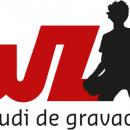Joemeek oneq , channel strip, pre, eq y opto compresor
Por wizoengl el 10/02/2014 en Castellón
Expiración: 27/11/2015 | Visto 954 veces
350€
El usuario ha marcado este anuncio como vendido
Otros anuncios que te pueden interesar
-
JoeMeek oneQ previo micro profesional en Madrid715 €
-
Vendo Home studio en Zaragoza1 €
-
395 €
-
ST Modular Sum V2 en Madrid220 €
Vendo channel strip Joemeek oneq , perfecto como previo todo en uno para pequeños estudios o como primer channel strip. Tiene las típicas marcas de uso de rack. lo vendo porque necesito el dinero para otra inversión y ahora mismo no le doy casi uso. El pago debe ser mediante transferencia bancaria antes de enviar el previo. Envio no incluido en el precio
Mando fotos a los interesados por privado .
Dejo las especificaciones del fabricante :
oneQ Specifications
Input impedances:
Mic: 1.2kohm; Line: 20kohm
Pre-amp overall gain:
10dB to 60dB (variable)
Common mode rejection:
70dB
Equivalent input noise:
-128.5dBu (unweighted)
Distortion:
0.001% (below Compressor threshold)
Frequency response:
15Hz to 70kHz (-3dB)
Maximum input before clipping:
Mic: +21dBu; Line: +45dBu
Headroom before clipping:
+21dBu
Compressor threshold:
∞dBu to -20dBu (variable)
Compressor ratio:
1:1 to 10:1 (variable)
Compressor attack time:
1 msec to 100 msec (adaptive)
Compressor release time:
0.1 sec to 3 sec (adaptive)
Nominal output levels:
+4dBu/-10dBv
Output impedance:
100ohm
Output Level switch:
12dB attenuation
Noise Floor:
-85dBu (typical, with ~40dB mic gain)
VU Meter:
Analogue movement
Power supply:
115V / 230V ac mains, 50/60Hz
Power consumption:
30W
Mechanical:
482W x 88H x 220D (overall)
Weight:
3 kilos
High Pass Filter:
12dB per octave cut below 80Hz
EQ Boost & Cut:
+/-15dB (zero phase-shift bell response)
LF Frequency :
80Hz/120Hz switchable
LMF Frequency :
200Hz to 2kHz variable
HMF Frequency :
1kHz to 6kHz variable
HF Frequency :
7kHz/14kHz (selectable)
EQ “Q”
0.9 (1.6 octaves
Digital Output Specifications
Sampling:
24 Bit
Resolution:
24-bit delta sigma using Wolfson WM8738 ADC
Sampling Rate:
44.1kHz, 48kHz, 88.2kHz or 96kHz selectable
Output Formats:
AES3 compliant (balanced), S/PDIF electrical
Oversampling:
This is [sample frequency divided by twice the bandwidth]. So for a 20kHz bandwidth sampled at 96kHz, oversampling = 2.4x.
However the term oversampling is sometimes confused with [clock frequency divided by sample rate]. In the DB-1 that would be 256x at 96kHz
Noise Floor: typically 92dB A-weighted (referenced to 0dBFS = +18dBu). So for a +4dBu signal, the SNR is 78dB
Distortion: typically 0.01% @ 0dBu (20Hz - 20kHz) at 96kHz sample rate
typically 0.02% @ 0dBu (20Hz - 20kHz) at 48kHz sample rate
typically 0.02% @ -1dBFS (20Hz - 20kHz) at all sample rates
External Word Clock input:
75ohm, 1.25V - TTL level, 44.1kHz to 96kHz (auto synchronising)
Crosstalk:
typically -67dB (20Hz - 20kHz)
Digital Interface
The Joemeek Digital Audio Interface provides high quality digital audio outputs plus the ability to synchronize to an external word clock. The digital audio outputs are compatible with most digital recorders, as well as Digital Audio Workstations and mixers. S/PDIF format is available from the RCA phono connectors, while the transformer coupled XLR connector provides an AES3 compatible output.
The Joemeek Digital Interface has highly stable onboard master clocks for low-jitter, hi-fi results. Internal sample rates of 44.1kHz, 48kHz, 88.2kHz or 96kHz are selected by means of rear panel switches. 44.1kHz is the standard used for audio CD's, while 48kHz and 96kHz are widely used in recording studios. In general, the higher the sample rate, the better the audio fidelity, but the more disk space is required for the recording. For example, recording at 96kHz requires twice as much storage as 48kHz. Consult the manual of your recorder or DAW as to what sample rates it will accommodate.
Alternatively the oneQ may be set to the frequency of an external master word clock, generated, for example, by the studio's recorder or DAW. When connected to the BNC socket provided, a suitable external word clock will be detected automatically and will override the twinQ's internal word clock.
The front panel LED labelled 'EXT CLK' illuminates when the oneQ is successfully locked to an external word clock. To avoid distortion, care should be taken not to overdrive the input to the Digital Interface. The red LED next to the Output Gain control is labeled "PEAK FSD" which stands for "Full Scale Digital". Occasional flashes are OK but if it is on all the time, turn something down!
Mando fotos a los interesados por privado .
Dejo las especificaciones del fabricante :
oneQ Specifications
Input impedances:
Mic: 1.2kohm; Line: 20kohm
Pre-amp overall gain:
10dB to 60dB (variable)
Common mode rejection:
70dB
Equivalent input noise:
-128.5dBu (unweighted)
Distortion:
0.001% (below Compressor threshold)
Frequency response:
15Hz to 70kHz (-3dB)
Maximum input before clipping:
Mic: +21dBu; Line: +45dBu
Headroom before clipping:
+21dBu
Compressor threshold:
∞dBu to -20dBu (variable)
Compressor ratio:
1:1 to 10:1 (variable)
Compressor attack time:
1 msec to 100 msec (adaptive)
Compressor release time:
0.1 sec to 3 sec (adaptive)
Nominal output levels:
+4dBu/-10dBv
Output impedance:
100ohm
Output Level switch:
12dB attenuation
Noise Floor:
-85dBu (typical, with ~40dB mic gain)
VU Meter:
Analogue movement
Power supply:
115V / 230V ac mains, 50/60Hz
Power consumption:
30W
Mechanical:
482W x 88H x 220D (overall)
Weight:
3 kilos
High Pass Filter:
12dB per octave cut below 80Hz
EQ Boost & Cut:
+/-15dB (zero phase-shift bell response)
LF Frequency :
80Hz/120Hz switchable
LMF Frequency :
200Hz to 2kHz variable
HMF Frequency :
1kHz to 6kHz variable
HF Frequency :
7kHz/14kHz (selectable)
EQ “Q”
0.9 (1.6 octaves
Digital Output Specifications
Sampling:
24 Bit
Resolution:
24-bit delta sigma using Wolfson WM8738 ADC
Sampling Rate:
44.1kHz, 48kHz, 88.2kHz or 96kHz selectable
Output Formats:
AES3 compliant (balanced), S/PDIF electrical
Oversampling:
This is [sample frequency divided by twice the bandwidth]. So for a 20kHz bandwidth sampled at 96kHz, oversampling = 2.4x.
However the term oversampling is sometimes confused with [clock frequency divided by sample rate]. In the DB-1 that would be 256x at 96kHz
Noise Floor: typically 92dB A-weighted (referenced to 0dBFS = +18dBu). So for a +4dBu signal, the SNR is 78dB
Distortion: typically 0.01% @ 0dBu (20Hz - 20kHz) at 96kHz sample rate
typically 0.02% @ 0dBu (20Hz - 20kHz) at 48kHz sample rate
typically 0.02% @ -1dBFS (20Hz - 20kHz) at all sample rates
External Word Clock input:
75ohm, 1.25V - TTL level, 44.1kHz to 96kHz (auto synchronising)
Crosstalk:
typically -67dB (20Hz - 20kHz)
Digital Interface
The Joemeek Digital Audio Interface provides high quality digital audio outputs plus the ability to synchronize to an external word clock. The digital audio outputs are compatible with most digital recorders, as well as Digital Audio Workstations and mixers. S/PDIF format is available from the RCA phono connectors, while the transformer coupled XLR connector provides an AES3 compatible output.
The Joemeek Digital Interface has highly stable onboard master clocks for low-jitter, hi-fi results. Internal sample rates of 44.1kHz, 48kHz, 88.2kHz or 96kHz are selected by means of rear panel switches. 44.1kHz is the standard used for audio CD's, while 48kHz and 96kHz are widely used in recording studios. In general, the higher the sample rate, the better the audio fidelity, but the more disk space is required for the recording. For example, recording at 96kHz requires twice as much storage as 48kHz. Consult the manual of your recorder or DAW as to what sample rates it will accommodate.
Alternatively the oneQ may be set to the frequency of an external master word clock, generated, for example, by the studio's recorder or DAW. When connected to the BNC socket provided, a suitable external word clock will be detected automatically and will override the twinQ's internal word clock.
The front panel LED labelled 'EXT CLK' illuminates when the oneQ is successfully locked to an external word clock. To avoid distortion, care should be taken not to overdrive the input to the Digital Interface. The red LED next to the Output Gain control is labeled "PEAK FSD" which stands for "Full Scale Digital". Occasional flashes are OK but if it is on all the time, turn something down!
OfertasVer todas
-
 -26%AKAI MPC Key 611.290 €Ver oferta
-26%AKAI MPC Key 611.290 €Ver oferta -
 -21%Zoom H4n Pro Black158 €Ver oferta
-21%Zoom H4n Pro Black158 €Ver oferta -
 -35%Set de grabación completo de Focusrite184 €Ver oferta
-35%Set de grabación completo de Focusrite184 €Ver oferta
Usuario
Registrado 25/11/2007
Comentarios6
Temas2
Posts en foros20
Seguidores8
Fotos4
Mercasonic Score









